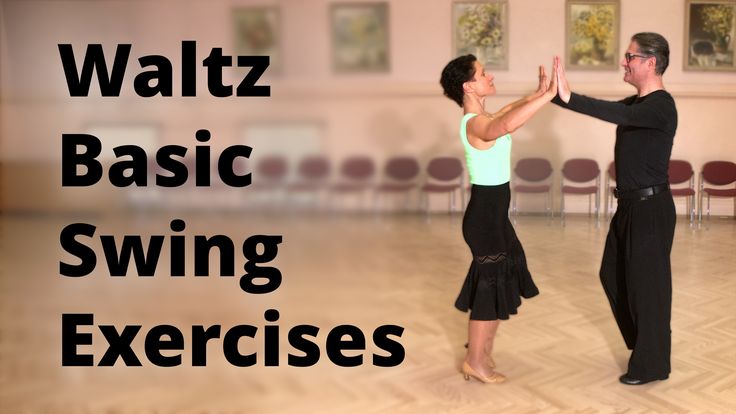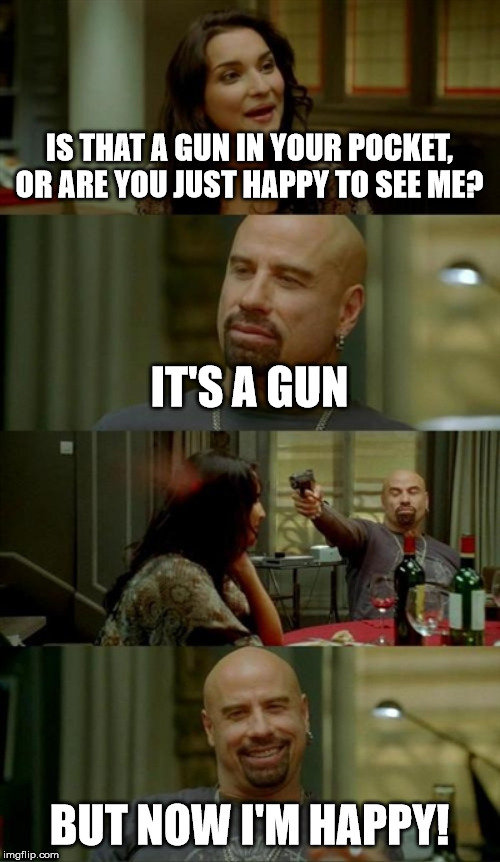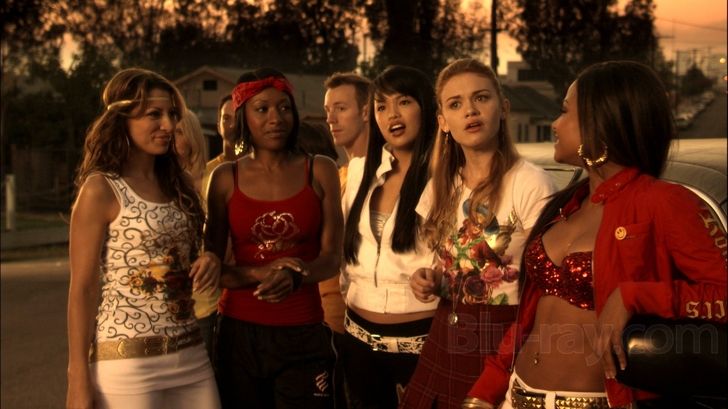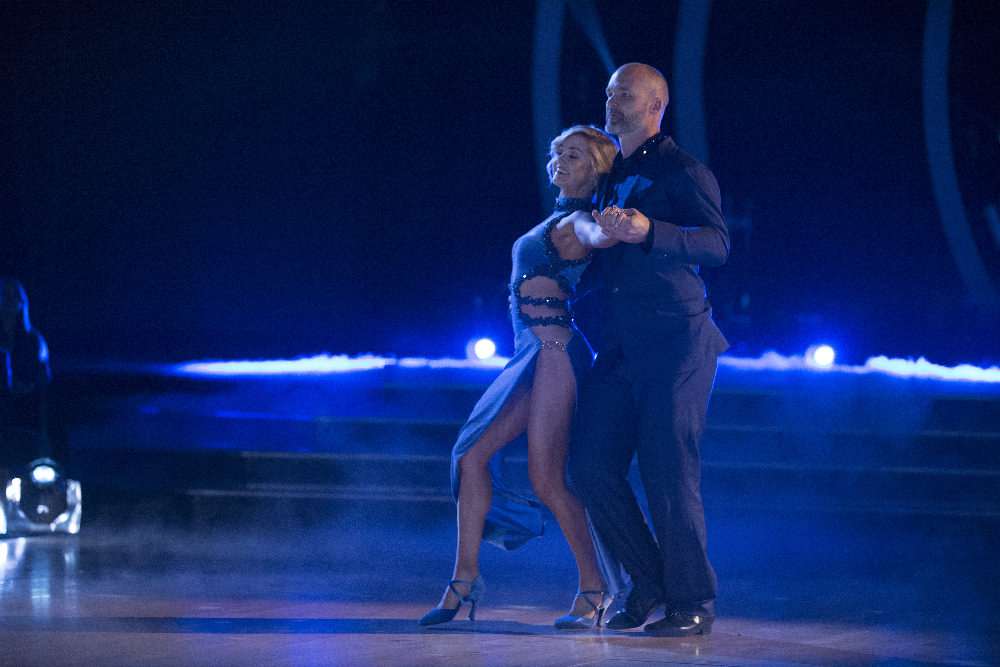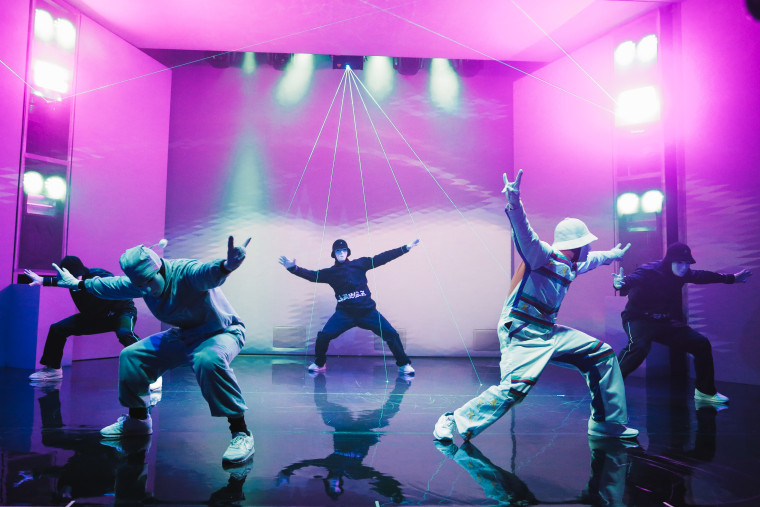How to dance waltz basic steps
Learn Basic Steps For Waltz
Waltz is an elegant, nearly universal dance, perfect for weddings, or almost any social occasion. It's not as hard to learn as most people think.
- Basic steps
- Instructions & Diagrams
- Video
- Recommended Video Lessons »
Quick intro
Waltz dates back to the late 17th century Europe, but has never really been out of fashion and clearly stood the test of time. It should probably be one of the first ballroom dances you learn.
It is a smooth and graceful dance with long, flowing movements, characterized by rise & fall motion. It has a unique 3/4 timing and a simple rhythmic pattern which blends with the music. You can start waltzing very quickly by just learning the simple box step.
Basic steps
The basic step for waltz is a box step. It's named after a pattern it creates on the floor (box or square) and forms the foundation of the dance.
A box step can be divided into two parts - a forward half box and a backward half box. Each half box has three steps - a step forward or backward, a step to the side, and a step to close the feet together.
The leader starts with the left foot and executes a forward half box, followed by a backward half box. The follower performs the opposite – she starts with the right foot and executes a backward half box, followed by a forward half box.
The basic box step pattern uses three counts - slow, quick, quick, which is repeated twice to create the box step. Timing is 1,2,3,1,2,3 or 1,2,3,4,5,6.
Instructions & Diagrams:
When dancing waltz someone has to lead and someone has to follow. Usually the man will lead and the woman will follow.
Men's Steps:
- Step forward with the left foot
- Right foot step sideways to the right
- Bring your left foot next to your right foot
- Step back with the right foot
- Step back sideways with the left foot
- Bring your right foot next to your left foot
Lady's Steps:
- Step back with the right foot
- Left foot step sideways to the left
- Bring your right foot next to your left foot
- Step forward with the left foot
- Step forward sideways with the right foot
- Bring your left foot next to your right foot
Video
In this video Leon and Kim will show you the basic box step.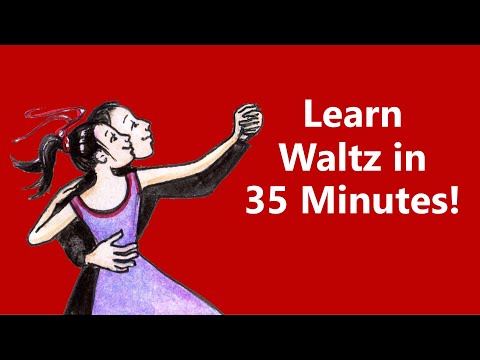 You will also get important tips on rise & fall movement which characterizes this dance:
You will also get important tips on rise & fall movement which characterizes this dance:
more videos »
Once you've mastered the basic box step, it's time to start rotating that box. It will usually be rotated to the left (counterclockwise), so it's called the Left Box Turn. It's quite simple: with each half box, you turn 1/4 of the turn to the left. After two boxes (or four half boxes) you will complete the turn and end up where you began. Then start all over again.
Ok, so now that you know the basic box and how to rotate it, lets continue with basic progressive. Here, as the name implies, the leader will always be moving forwards and the follower backwards. This will enable you to move around the dance floor instead of just dancing on the spot. Here is a clip from Learn & Master Ballroom Dance course that will show you in detail how it's done:
Where to go next?
Now that you know the basics, what's your next step (pun intended ;)? To go to the next level, we recommend one of the video training programs. Here are our recommendations »
Waltz Dance Steps
Thomas Wilson Correct Method of German and French Waltzing 1816, showing nine positions of the Waltz.Photo by unknown engraver / Public domain
How to Dance the Waltz
Waltz is a smooth dance, traveling around the line of dance. It is characterized primarily by its rise & fall action.
The shoulders move smoothly, parallel with the floor, not up and down.
The head should turn in the direction of the turn, otherwise the man's head is upright and looking over the right shoulder of the lady.
The American Waltz is similar to the International style except it has both open and closed dance positions. This allows the American style dancer a unique freedom of expression, including the ability to showcase character and theatrical presentation.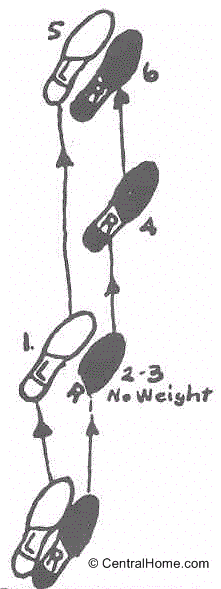
The slow waltz is danced to music written in 3/4 meter with 30 - 32 measures per minute.
Rise and Fall in Waltz
The rise and fall is unique to the waltz. If possible, all the the steps in the waltz should be long.
On the first step forward, the weight is taken on the heel, then on to the ball of the foot.
A gradual rise to the toes should be started at the end of the first beat, and continued to the second and third beat of each bar of music.
Lower to the normal position at the end of the third beat by lowering to the heel of the foot which is carrying the weight.
Waltz Left Foot Change
Man's foot position
Waltz dance step - Left foot changeStep diagram by Centralhome.com
Rhythm - One, two, three.
Waltz Right Foot Change
Man's foot position
Waltz-Steps-Right-Foot-ChangeStep diagram by Centralhome.com
Start position - facing line of dance)
Rhythm - One, two, three.
Waltz Left Box
The basic waltz steps looks like a box on the floor.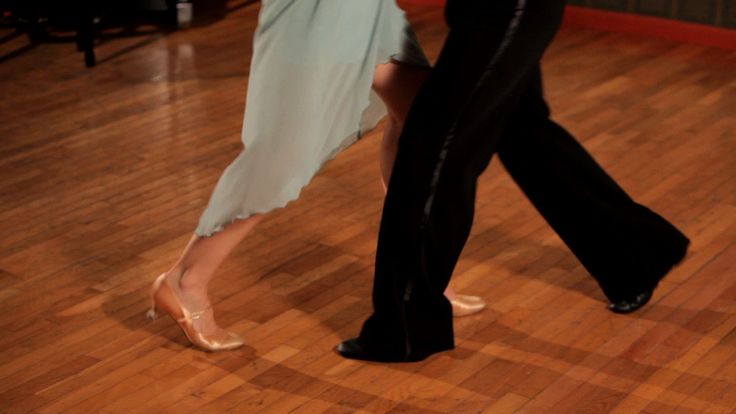 The basic step is called the Left Box. It is a combination of the Left Foot Change (forward) and the Right Foot change (backwards or against the line of dance)
The basic step is called the Left Box. It is a combination of the Left Foot Change (forward) and the Right Foot change (backwards or against the line of dance)
The Box Step can also have a slight amount of turn, from 1/8 to 3/4 turn. The turn is used to turn corners or stay in a small area on a crowded nightclub dance floor.
Man's foot position
Waltz Box Step or Left Box StepStep diagram by Centralhome.com
Man starts and finished facing Line of Dance
Rhythm - One, two, three. One, two, three.
The man is in closed dance position in front of the woman, facing line of dance. The woman is slightly to the right.
Man's Steps
1. Step forward with the LF.
2. Step forward with the RF so that right foot is parallel to left foot.
3. Bring the LF to the RF.
4. Step back with the RF.
5. Step back with the LF so that the left foot is parallel to right foot.
6. Bring the RF to the LF.
Woman's Steps
1. Step back with the RF.
Step back with the RF.
2. Step back with the LF so that the left foot is parallel to right foot.
3. Bring the RF to the LF.
4. Step forward with the LF.
5. Step forward with the RF so that right foot is parallel to left foot.
6. Bring the LF to the RF.
Waltz Forward Progressive
Man's foot position(left foot change and right foot change)
Waltz step - forward progressiveStep diagram by Centralhome.com
Start position (face line of dance)
Rhythm - One, two, three.
Waltz Promenade Step
Man's foot position
Waltz step - promenadeStep diagram by Centralhome.com
Rhythm - One, two, three.
About the Author
Jake Fuller is a staff writer for Centralhome.com.
Recommended for you
More Waltz Steps - Left turn, Right turn, Whisk (man's and lady's part)
Waltz History - How old is Waltz?
Waltz Syllabus - Waltz International Standard Ballroom Dance.
International versus American Dancing - Differences in style.
Share
Previous in Steps: Polka Steps
Next in Steps: Waltz Steps 2
Basic waltz movements - how to learn to dance
Waltz is not in vain considered the king of dances. He is always present at all events, various receptions and, of course, at the prom.
But everyone thinks about it at some point, because the time of the prom is getting closer and closer, and there is simply no time to spend energy taking lessons from professionals. In this case, you can learn to dance the waltz yourself, at home.
As for the rotation, if you look from the side, it may seem somehow complicated and incomprehensible, but in fact the rotation goes counterclockwise along the square.
As for the steps, it is also worth noting a small nuance - for each corner of a simple square there are two small steps and one large one. This is very important to remember and keep in mind so as not to get confused.
I would also like to note, once again, that waltz rotation is one of the most important components. You always need to turn to the right side, and if you look from a purely mathematical point of view, then each turn consists of two half-turns, which are equal to one hundred and eighty degrees.
Now let's look at the steps. To start the turn, you need to take one step forward with your right foot. In this case, it is very important to make a turn to the right in a clockwise direction. Next, you should take a step already with your left foot, but at the same time continue to carry out the already started turn, after which the left foot should be placed on half-toes.
And finally, the right leg should be, then attached to the left, after which both legs should stand on a full foot. This is the first part of the square you will make.
To complete the second part, you need to do almost the same thing, only in reverse.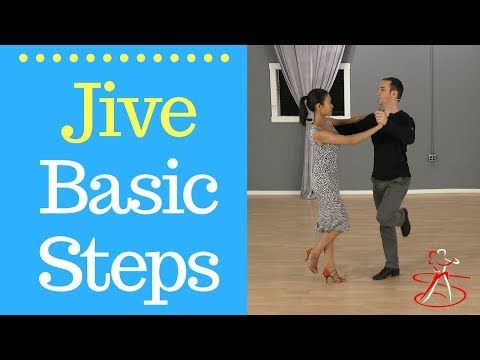
That is, first you need to take a step back with your left foot, and this step must be done diagonally and all the weight must be transferred to the left foot.
If you have never danced a waltz in your life, then you have definitely lost a lot. But do not be upset. Because it's never too late to learn. The most important thing is desire and effort. A farewell school waltz, which will forever remain in the memory of all of us for many years, a wedding waltz performed by two loving people will bring a lot of pleasure and give a great mood. The waltz is always danced by artists at concerts, athletes at various dance tournaments, as well as all those who are just interested in it.
Classics are eternal
Waltz is a beautiful, gentle dance, which can be based on any story: a first date, a dramatic love story with parting, warm relationships that have been preserved over many years of living together.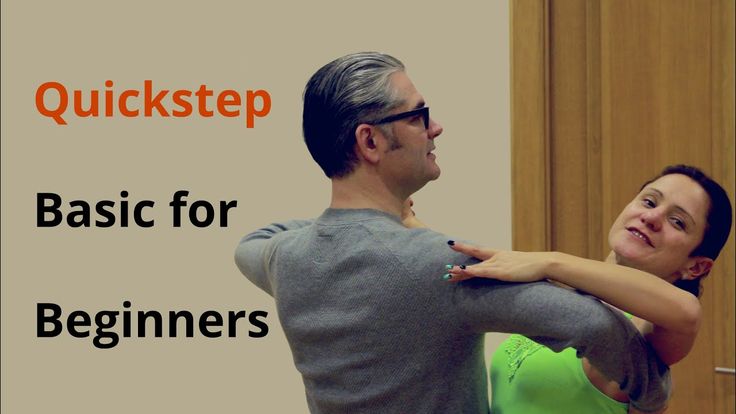 Children dance the waltz at matinees, young couples at school balls and registry offices, and adults and the elderly at anniversaries and wedding anniversaries or just for fun. For everyone, it has its own meaning, while remaining the single most beautiful, classical dance of many eras.
Children dance the waltz at matinees, young couples at school balls and registry offices, and adults and the elderly at anniversaries and wedding anniversaries or just for fun. For everyone, it has its own meaning, while remaining the single most beautiful, classical dance of many eras.
The history of the waltz begins with the combination of the German peasant dance Lendler, distinguished by its exquisite simplicity and spontaneity, and the Provencal Volta dance with jumps and rotations. Translated from German, the name of the dance "walzen" means "circle" or "rotate". The birthplace of the waltz is Vienna in the 80s of the 18th century. Viennese waltz is lively and intense due to the frequently changing tempo and rhythm, and the constant alternation of left and right turns. Today there are many varieties of waltz. These are the Viennese waltz, which is called any fast form of dance, the classical waltz performed in closed positions, figured and slow waltzes and the Boston waltz.
Waltz: first lessons
In order to learn how to dance the waltz, you need to love it and want to "dissolve" in it. Choosing a partner (partner) who is visually and emotionally similar to each other is the main key to success in the waltz, as in any dance.
The main figure of the waltz is a full turn with three steps in each measure, performed mainly in a closed position. To begin with, each partner needs to master this turn individually, separately from each other. To make the turn smooth and sliding, you need to direct the entire body weight to the center of the legs.
Try the first steps preferably without music, under your own account or with a partner's account, this will give the main turn more clarity and confidence.
The first step on the count of "one" is the widest compared to the next two. The torso should be kept straight, shoulders straightened, head slightly raised and look in front of you.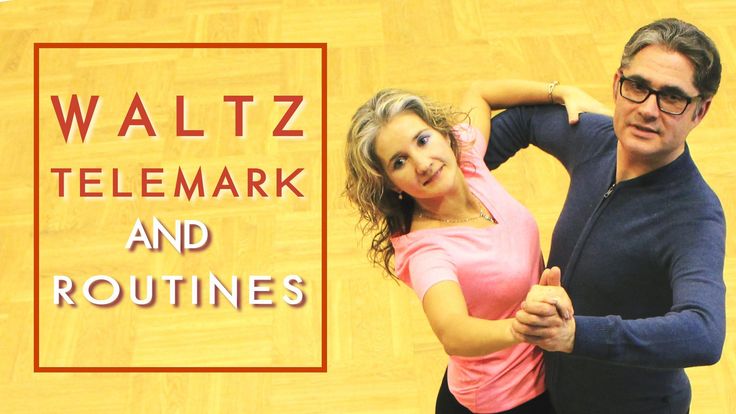 It is advisable not to look at your feet during the first lessons, so as not to relearn later. When turning clockwise on the count of "two" and "three", the turn should turn the body 180 degrees from the original location.
It is advisable not to look at your feet during the first lessons, so as not to relearn later. When turning clockwise on the count of "two" and "three", the turn should turn the body 180 degrees from the original location.
If the first turn started with the right foot forward, then the second must be with the left foot back. Thus, the steps lead in a straight line. When music is applied and partners are connected, the main turns of the waltz will themselves begin to “smooth out”, forming a large circle.
When moving to paired dance lessons, the partner places his right hand slightly below the partner’s left shoulder blade, keeping the elbow at an angle of 90 degrees in relation to his own body, and his left hand is carried out to the side just below eye level and acts as a support for her right hand .
The partner puts her left hand on her partner's shoulder, slightly pressing on him to be more obedient in the dance, and looks over her, turning her head to the left and slightly upward. At the same time, she keeps her shoulders straight and slightly takes them back. This position gives her balance, and the partner's confidence in controlling her in the dance. Partners must "glide" in sync and smoothly to give the waltz its inherent grace and grandeur.
At the same time, she keeps her shoulders straight and slightly takes them back. This position gives her balance, and the partner's confidence in controlling her in the dance. Partners must "glide" in sync and smoothly to give the waltz its inherent grace and grandeur.
When you feel confident in the basic elements and your position in relation to each other, at the next stages of improving the waltz, you can claim a more complex setting and improvisation.
With good dedication, a “personal” waltz can become professional, extraordinary and unforgettable.
Classical waltz (dance): steps, turns
Classical waltz is the basis of classical ballroom dance. It is the main or integral part of many domestic ballroom dances: Waltz Mignon, Figured Waltz, Waltz Gavotte, Waltz Mazurka.
Classic Waltz is performed in the 3rd position of the feet.
Time signature - 3/4.
One full 360 degree waltz turn. (full tour of the classical waltz) consists of two parts (two half-rounds): the first half of the turn (by 180 degrees) and the second half of the turn (by 180 degrees).
A full waltz turn takes 2 measures of musical accompaniment. Each half turn takes 1 cycle.
Performing waltz turns, the partners move forward along the line of dance.
Music
Time signature 3/4.
Slow or moderate pace.
Score: I-1-I-2-I-3
Preparatory exercises
- Bringing the leg to the toe - battement tendu (tandu buttman) 3 positions in a cross one by one (right foot and left foot).
- Rise on the half-toes (relevé - relevé) in 3 positions.
- Dance step
- Waltz Pa
WALTZ RIGHT TURN ONE BY
Starting position:
The dancers stand in a circle, facing the center.
Legs - in 3rd position (right leg in front)
Arms - in ball position (slightly away from the body).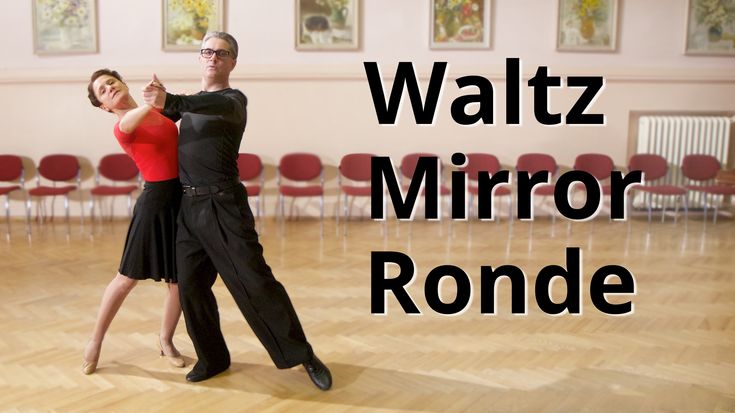
1 measure - First half of the Waltz
| Count | Movement description |
| Start-up (I) | (Shift weight to left foot.) Bring the right leg, straightened at the knee with the toe pulled out, to the toe - forward diagonally to the right (in the direction where the toe of the right leg from 3 pos. shows). Slightly soften the knee of the supporting left leg. |
| 1 | Sliding step with the right foot forward diagonally to the right (in the direction where the toe of the right foot points) from the toe to the entire foot, performing on the ball of the right foot half a turn to the right by 180 degrees. Stop with your back to the center. (Down on the whole foot only after turning.) Shift your weight onto your right leg. Slightly soften the knee of the right leg. The left leg remains behind the right leg on the toe, slightly bent at the knee. |
| and | The left leg, also softened at the knee, is held in a sliding motion next to the right leg through 1 pos. and is brought to the side on the toe along the line of dance (in 2 pos.). The left leg is extended. (Right knee is relaxed.) |
| 2 | Step with the left foot to the side (along the line of dance) on the half-toes. Shift weight onto left leg. The right leg is left out on the toe. Knees extended. |
| and | With a sliding motion, pull the right leg with the toe on the floor and put it on the toes in 3 pos. behind the left leg. (Weight - on two legs.) |
| 3 | Sit down gently on full feet in 3 poses. (left leg in front). Shift your weight onto your right leg. |
2nd measure - Second half of the Waltz
| Count | Movement description |
| Start-up (I) | Bring the left leg, straightened at the knee with the toe pulled out, to the toe - forward diagonally to the left (in the direction where the toe of the left leg from 3 pos. shows). shows). Slightly soften the knee of the supporting right leg. |
| 1 | Gliding step with the left foot forward diagonally to the left (in the direction where the toe of the left foot points) from the toe to the entire foot, performing on the ball of the left foot half a turn to the right by 180 degrees. Stop facing the center. (Down on the whole foot only after turning.) Shift weight onto left leg. Slightly soften the knee of the left leg. The right leg remains in front of the left leg on the toe, slightly bent at the knee. |
| and | The right leg, also softened at the knee, is held in a sliding motion next to the left leg through 1 pos. and is brought to the side on the toe along the line of dance (in 2 pos.). The right leg is straightened. (Left knee is relaxed.) |
| 2 | Step with the right foot to the side (along the line of dance) on the half-toes.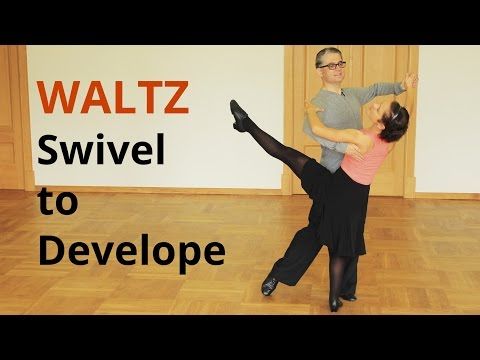 Shift your weight onto your right leg. The left leg is left out on the toe. Knees extended. |
| and | With a sliding motion, pull the left leg with the toe on the floor and put it on the toes in 3 pos. behind the right leg. (Weight - on two legs.) |
| 3 | Sit down gently on full feet in 3 poses. (right leg in front). Shift weight onto left leg. |
Notes:
- Perform each part of the turn exactly 180 degrees. (Stopping exactly in the directions: back to the center, facing the center.)
- Rotate 180 degrees. carried out in the first step.
- The turn is performed simultaneously with moving forward diagonally (along the line of dance).
- The second step is performed exactly to the side, along the line of dance.
- The second step must be with the rise on the half-toes.
- After completing each step, fully transfer the weight of the body to the leg.
 (Second leg must be free from body weight.)
(Second leg must be free from body weight.) - All steps are performed from the toe.
- Steps are performed smoothly, without sudden jerks.
- Movement and rotation must be continuous, without stopping.
- Accurately observe the 3rd position of the feet.
- Knees are not tense when moving.
COUPLE WORKOUT:
"EXCHANGE - HANDS CROSSED"
Starting position:
The dancers stand in pairs in a circle, facing the center, the girl is to the right of the boy.
Legs - in 3 positions (right leg in front).
The partners' hands are connected in front of the body crosswise (crosswise) - the boy's right hand with the girl's right hand, the boy's left hand with the girl's left hand (left hands on top).
Partners move in turn.
Hands do not separate during movement.
First, the boy performs a full waltz tour, bypassing the girl. (The girl does not move at this time.)
1 measure - The boy performs The first half of the waltz turn and ends it with his back to the center, exactly opposite the girl.
Bar 2 - The boy performs The second half of the Waltz turn and ends it facing the center, next to the girl, to her right.
Partners have changed places.
Then the girl performs a full waltz tour, bypassing the boy. (The boy does not move at this time.)
3 measure - The girl performs the first half of the waltz turn and ends it with her back to the center, exactly opposite the boy.
Bar 4 - The girl performs the second half of the waltz turn and ends it facing the center, next to the boy, to his right.
Partners returned to their seats.
Remarks:
- the first step with the right foot is performed diagonally forward in front of the partner;
- after stepping and turning on the right foot, you must be opposite the partner, facing him;
- The second step with the left foot must be small to stay in front of the partner.

- the first step with the left foot is performed diagonally forward close to the partner, next to his right foot;
- after stepping and turning on the left foot, you must be in line with your partner, facing the center;
- The second step with the right foot should be very small so as not to go far from the partner.
During the first half of the turn:
During the execution of the second half of the turn:
WALTZ TURN (FULL WALTZ TOUR) RIGHT in pair IN CLOSED POSITION
Starting position:
Closed position for classical ballroom dancing:
The dancers stand in pairs in a circle, the boy with his back to the center, the girl facing the center. At the same time, the partners are slightly shifted to the left relative to each other (“left-sided stance”).
Legs - in 3 positions: for the boy - the left leg in front, for the girl - the right leg in front. In the closed position, the toe of the girl's right foot should be between the boy's feet.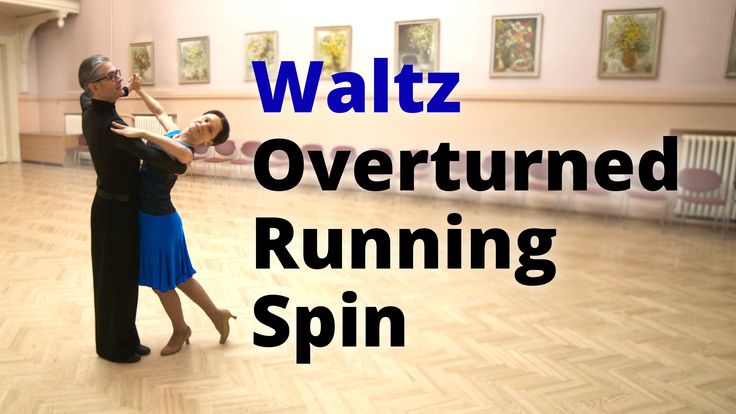
Partners' hands:
With his right hand, the boy holds the girl behind her back, under her left shoulder blade. The elbow of the boy's right hand is raised to the side. All fingers of the boy's right hand are collected and directed slightly downward (the hand is lowered with fingers down).
The girl's left hand rests on the boy's right shoulder. The girl holds the boy's shoulder between her thumb and middle fingers. The rest of the fingers are collected together. The hand is straight, an extension of the hand. The elbow of the girl's left hand rests on the boy's right hand.
The left hand of the boy and the right hand of the girl are connected in 2nd position (arms are just below the shoulder, elbows are slightly bent and pointing back). The connection of the brushes is "by the fingers": the palm of the boy's left hand is slightly turned up; the fingers of the girl's right hand lie on the fingers of the boy's left hand; fingertips are directed to the center of the palm; partners hold each other's fingers with their thumbs.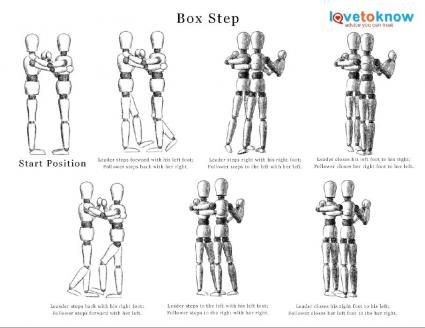
Partners' heads turned slightly to the left.
You can practice waltz turns in pairs, first with cross-linked hands. Or you can join your hands in a training position: the hands of partners are connected by forearms at a height of 2 positions. The boy supports the girl under the elbows, the girl's hands lie on the boy's elbows. Elbows are rounded.
Partners move at the same time.
1 Tact (Polter of a waltz turn):
The boy performs The second half of the waltz turn to the right
The girl performs the first half of the waltz turn to the right
2 Tact (Poltur of the Walse turn):
The boy performed . turn to the right
The girl performs The second half of the waltz turn to the right
Notes:
- During the first half of the turn, the first step with the right foot is forward diagonally between the partner's feet. The first step is active, to move to the place of a partner.
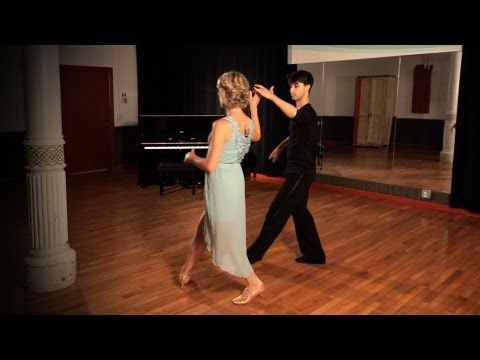
- When performing the second half of the turn, the first step with the left foot is taken forward diagonally close to the partner, next to his right foot, on the line where the partner is standing.
- Rotate 180 degrees. carried out in the first step. After the first step and turn, the partners should already change places and stand again facing each other.
- Both partners perform the second step to the side, along the line of dance.
- The partner performing the first half of the turn, the second step with the left foot to the side should be slightly longer than that of the partner performing the second half of the turn.
Literature
- " Modern ballroom dance ". Manual for students of cultural institutions, students of cultural and educational schools and leaders of ballroom dance groups. Edited by V.M. Striganova and V.I. Ural. M., "Enlightenment", 1978
- " Historical dance ". Tutorial. I. Voronina.

